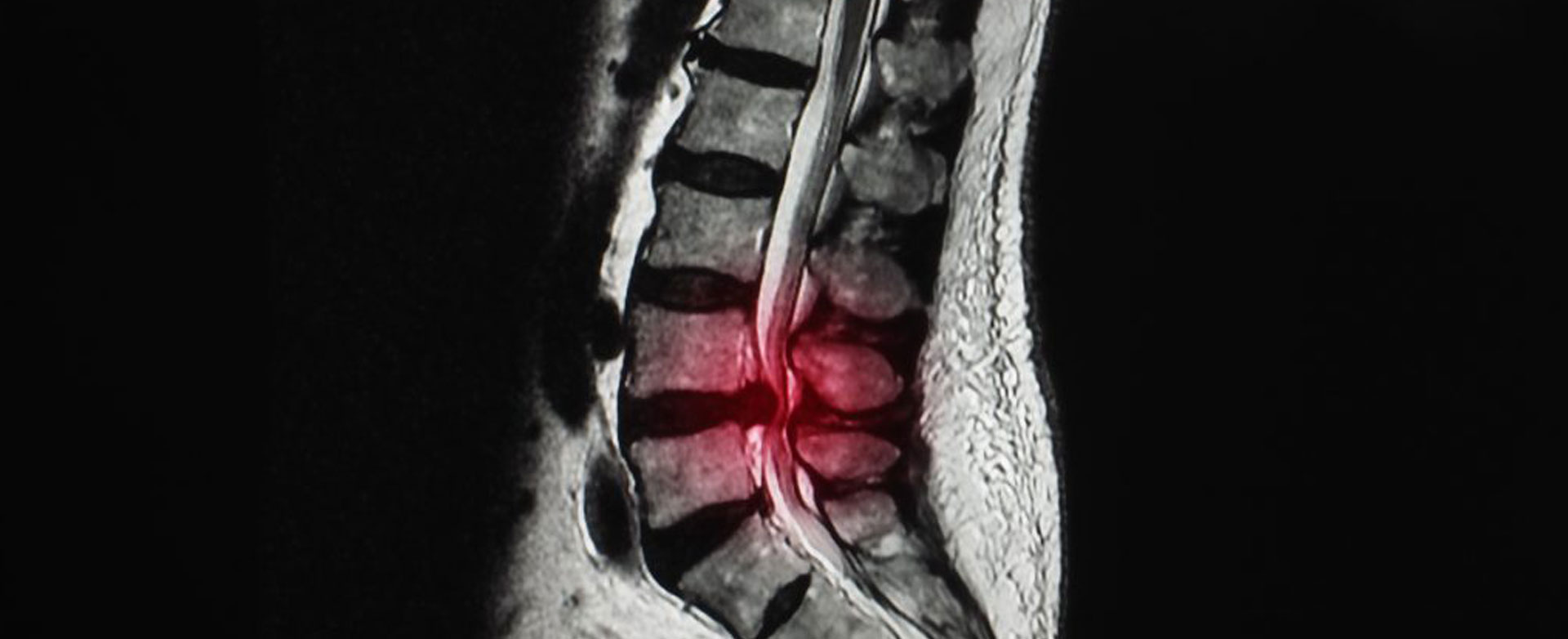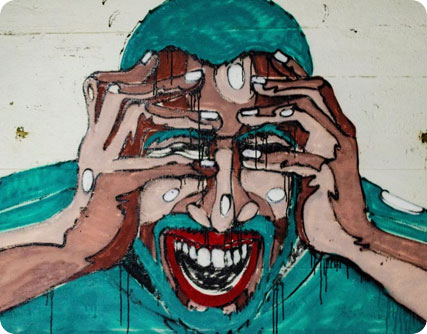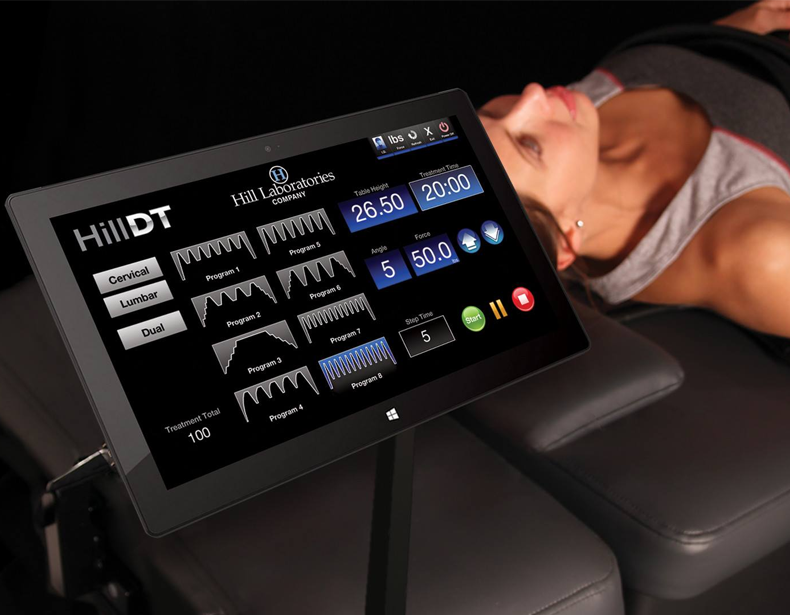“….I couldn’t help but feel that there is untapped value in this modality, but some early unscrupulous hype has not helped this technology find it’s true place in the treatment of spinal pain and dysfunction. …”
PRACTICAL PAIN MANAGEMENT – Article in Volume 9, Issue #7
https://www.practicalpainmanagement.com/pain/spine/discogenic/non-surgical-spinal-decompression-nssd
Non-surgical Spinal Decompression (NSSD)
The idea of disc decompression in the absence of surgery has garnered much attention in the last 10 years, but not all the notoriety has been positive or without controversy. Like any new technology it has had many supporters and just as many detractors, or so it seems. Whenever a new therapy or treatment for an age-old problem such as spine pain is developed, it seems there is a knee jerk reflex that occurs within the clinical community that further triggers a series of events.
One of the first occurrences might be described as an over-exuberance toward the product with early users and/or adopters of the technology falling prey to overstating the worth of the product without any real substantive research to support the claims, and all too often, based on profit potential. This can, and often does lead to mounting skepticism over the value of the product and can often overshadow the true benefits derived from using the product. What inevitably happens is that this early enthusiasm for a technology is met with an equal and opposite sentiment in the form of extreme criticism by those who feel that either the product is not what it is touted to be, or that the claims made on behalf of the product are not valid.
As clinicians, we can all think of a product, device, intervention or a piece of technology that had early expectations of significantly improving the treatment capability of a vexing health problem but, instead, became mired in controversy with resultant discrediting. There are few conditions that are as ubiquitous and costly to treat as lumbar degenerative disc disease (LDDD) so when a new technology purported to have a high case resolution rate for this condition comes along, it raises the attention level and suspicions of many groups or stakeholders—not the least of which are the entrepreneurs (both clinical and non clinical) who seek to profit from the vast treatment dollar potential. As I researched the history or evolution of this non-surgical spinal decompression (NSSD) technology, I couldn’t help but feel that there is untapped value in this modality, but some early unscrupulous hype has not helped this technology find it’s true place in the treatment of spinal pain and dysfunction. This clinical report will focus less on the marketing/ manufacturer’s claims surrounding NSSD and more on the available evidence for effectiveness, as well as the biologic plausibility supporting this intervention.
Degenerative Disc Disease (DDD)
The aging of the human spine, combined with micro- and macro-trauma to the spinal structures help explain some of the changes seen in cadavers as well as various forms of imaging of the live spine. There appears to be a natural degeneration that is temporal but which can be accelerated by postural changes brought about by redistribution of the biomechanical forces secondary to injury or simply changes in body habitus. We will confine our discussion to the lumbar spine for the purposes of this report but the same applies to the cervical spine and, less so, to the thoracic spine. Degeneration is universal to the structures that comprise the motion segment (functional unit) as defined by the composition of the two adjacent vertebral bodies along with the interposed intervertebral disc. The disc and two zygapophyseal (facet joints) at the same level function as a tri-joint complex. It is generally accepted that the majority (up to 90%) of the spinal loading occurs in the anterior portion of the spine when sitting and a little less when standing. As relative degeneration occurs, there is a shift from anterior to posterior loading or transmission of forces during dynamic motion to the point of parity. The disc acts to provide static stability to the functional spinal unit while dynamic stability is provided by ligaments and local muscles acting in an orchestrated manner—depending on spine position, functional anatomy and level of force required by the activity. The histologic and morphologic integrity of the spine are maintained by these structures. At any given time, there is a critical threshold for shear and compression forces of any given motion or functional segment, above which injury will occur. Recurrent or persistent forces above threshold levels lead to the breakdown of the motion segment—especially the disc and facet joints. The degenerative casacade has been described by Kirkaldy-Willis and has been a widely accepted model of spinal segment pathophysiology.1 In this model, the author describes a three-phase continuum that is based on a transitional process.
A brief description of the spinal disc is in order for a better understanding of the pathology that NSSD attempts to treat. The intervertebral disc has three major parts to it: the nucleus pulposus, the annulus fibrous and end plates. The nucleus contains the gel-like material (water and muchopolysaccharides) which provide viscosity when perturbed. Surrounding the nucleus pulposus, is the annulas fibrosus which, as its name implies, consists of collagen-based annular lamina which radiate outward and contain the nuclear material under normal physiologic loading. The outermost lamellae attach to the vertebral bodies via Sharpey’s fibers, while the innermost lamellae attach to the endplates. Under spinal compression, the nucleus pressurizes and applies hydraulic forces to the end plates vertically and the inner annulus laterally. The annular fibers become tense and can bulge outward as a result. Loss of nuclear material appears to lead to loss of disc height which has implications for facet loading, shear stiffness and ligament mechanics.2
Disc Regeneration Strategies
Of prime concern to those interested in re-establishing optimal disc health has been the idea that disc height and pressure characteristics be restored. Since the bony spine is both a dynamic and an adaptive structure, it is thought that these degeneration processes—which proceed through a series of biomechanical alterations—might, in like manner, be reversed by restoring homeostasis to the structure most central to this cascade of change: the disc. This concept as a pretext for surgical intervention is not new, that is, hoping that the insertion of either pedicle screws or an interspinous device for re-stabilization of a spinal segment will ultimately lead to “healing” or disc regeneration of the affected segment.3 Another method of disc regeneration examines the matrix within the nucleus pulposus as a target for therapeutic strategies. Since disc degeneration is associated with a decrease in cell density accompanied by a reduction in synthesis of cartilage-specific extracellular matrix components or matrix insufficiency, augmenting disc cell populations could lead to restored biomechanics via normalization of disc height and pressure. Regenerative potential has been demonstrated by using adipose tissue harvested cells that were transplanted into canine discs.4 The use of a synthetic disc prosthesis or disc replacement therapy such as the Charite disc or facsimile continues to entice the imagination, but early studies have been tainted with human scientific malpractice, including tampering with the data analysis. Perhaps in time, this intervention will prove valuable but it’s worth is difficult to assess at this time given the scandalous nature of the initial research.
Other disc regeneration strategies examine the utility of taking a cell biology approach to this problem. The number of viable cells within the disc matrix appears to decrease with time due to the effects of both aging and mechanical stresses imposed on the disc structure. Some investigators feel that disc cells undergo biologic changes, including cell type within the nucleus pulposus, along with an increase in cell death, increased cell proliferation of dysfunctional cells, increased cell senescence, and altered cell phenotype which is characterized by a compromised capability of synthesizing correct matrix components and by enhanced catabolic metabolism.5 These investigators suggest intradiscal protein injections—including gene transfer and cell implantation—as a possible disc anti-aging therapy. As well, the introduction of substances (drugs or molecular biologic techniques) to suppress apoptosis (cell death) and/or accelerated senescence of disc cells could be considered. Having described several disc sparing or regeneration strategies, it is important to note that most of the research that supports these therapies is based on in vivo animal models and not directly with humans. Caution should be applied for obvious reasons including that animal models may differ in cell populations, tissue composition, disc and spine anatomy, development, physiology and mechanical properties.6 Finally, there are those that propose to control those mechanical factors that negatively affect disc health, including both overload and immobilization as factors that directly impact disc status. Using epidemiological data to identify those factors that most accelerate disc degeneration include studies that examine both the “wear and tear” theory as well as its complement, the immobilization and load theory. Adverse external factors predisposing disc deterioration include abnormal disc loading. Both overload and underload have been targets for intervention along with internal factors that are predisposing to disc degeneration, including impaired neuromuscular elements such as the paraspinal/abdominal muscles.7
Evolution of Non-surgical Disc Decompression
Let me first start by acknowledging that I am aware of the distinctions made by NSSD manufacturers between their technology and conventional traction (CT). I will briefly review the differences in this report. NSSD is application of an axial traction force to the spine with the goal being the specific distraction of a spinal segment(s) while minimizing any reflexive muscle guarding from surrounding or investing musculature of the spine. One of the reasons NSSD manufacturers try and position their product distant from conventional traction systems is that the research evidence supporting the use of CT for spinal pain/dysfunction has not been altogether convincing.8-10 Having said this, application of traction has been around since the time of Hippocrates when spinal traction was combined with manipulation in the treatment of spinal pain. Traction remains a modality without a tremendous amount of research support but yet has withstood the test of time and the scrutiny of the many generations of practitioners from multiple disciplines. It continues to be respected today despite the paucity of clinical research in the form of randomized clinical trials. We continue to be intrigued by the potential that spinal traction holds including the possibility of reshaping and regenerating that elusive part of the spine (the disc) that seems to breakdown all too early in life. It is within this context that NSSD has evolved and, in many ways, conventional traction has become the segue dialogue for non-surgical spinal decompression. NSSD has been a work in progress starting with the early units depicted in Figure 1(photos courtesy of SpineMED, Inc). This first generation of decompression units created very high traction pull forces in an effort to overcome what we now recognize today as poor patient positioning options. These units traded off specificity of target spinal segment selection for brute force to overcome both passive tissue resistance, combined with pain-induced muscle guarding during treatment. The patient was an active participant in the treatment and in many cases, needed to provide the upper body stabilization or fixation. This presented several problems not the least of which was possible shoulder irritation. Further, patients having poor shoulder mobility could not use the device because of their restricted motion.
Figure 1. First generation of decompression units created very high traction pull forces. Picture available on weblink.
The second generation devices significantly improved the patient positioning aspect of NSSD and allowed for a more comfortable treatment session. Segment specificity, which allowed the practitioner to target the exact spinal segment, was facilitated by using a wider array of pelvic-angling options. This last upgrade addressed a critical feature of NSSD that helps to distinguish it from conventional traction systems. Figure 2 illustrates a second generation device with improved patient positioning (supine) and a greater selection of “lines of pull” that ultimately is a determinant of which area of the spine is distracted.
Figure 2. Second generation device with improved patient positioning (supine) and a greater selection of “lines of pull.” Picture available on weblink.
The third generation NSSD units are now available and really represent a state of the art technology with more complex electronic sensing circuitry that is used to better and more precisely control pull forces and directions (see Figure 3). The SpineMED unit features a new and improved patient-restraint system that is a departure from conventional nylon harnesses that tend to slip to a mechanical pelvic restraint system that eliminates “slippage” (see Figure 4). The computer-driven motor provides multiple lines of pull, or pull angles, which helps determine segmental specificity and accuracy. The SpineMED unit promises to be more efficient for the clinician by reducing patient set up and tear down times to mere seconds. One of the more important features of this latest generation that is now available is the pelvic rotation control which allows for actual pull values to be up to 60% less than what they were a few years ago (see Figure 5). This means that for a 200 lb patient who used to require a 100 lb pull, this patient can now be pulled or decompressed using 40 lbs, due to the optimal line of pull and patient restraint/ positioning system of the new generation units. The SpineMED unit has a force sensing capability that tests for patient resistance increases that might signal pain or reflex muscle guarding. By doing so, it can instantaneously self-adjust (release or re-engage pull) automatically without clinician involvement. This self-monitoring/ adjusting feature is both for patient safety and for provision of effective treatment—especially since the presence of pain can undermine this treatment in several ways. It is safe to say that the current generation of NSSD systems are far superior to the older versions in their ability to minimize total energy loss from inefficient pull actions. The older, second-generation decompression system relied on multiple pulleys and a nylon harness to generate and anchor bodyweight and provide spinal distraction. At each pulley location and harness there was “energy loss” which meant that the total energy required (gross energy) to achieve a suitable segmental distraction had be higher than normally desired in order to compensate for inherent energy leaks in the system.
Figure 3. Third generation NSSD units with more complex electronic sensing circuitry to more precisely control pull forces and directions. Picture available on weblink.
Figure 4. Third generation device features an improved patient-restraint system that replaces conventional nylon harnesses that tended to slip. Picture available on weblink.
Figure 5. Third generation device incorporates pelvic rotation control which allows for actual pull values to be up to 60% less than previously, due to the optimal line of pull. Picture available on weblink.
Discussion
The foundational research that supports disc regeneration is found primarily in animal research using rabbit intervertebral discs as the physiological model. The results of several of these studies are promising enough that human study data is warranted and justified. Decompressed rabbit discs did indeed show signs of early tissue recovery on a biologic, cellular and biomechanical level after approximately one month of distraction/decompression.11 In another study, the results of rabbit disc distraction resulted in rehydration of the disc, stimulated extracellular matrix gene expression, and demonstrated an increase in the number of protein-expressing cells.12 There are still some feasibility issues relating to dose that remain unclear and would require extrapolation from current in vivo studies. For example, the exact number of pull cycles (frequency/duration) and strength of pull (load) required to stimulate disc regeneration in a human spinal disc, assuming that the physiological response in the human disc is similar to that of an animal model. There continues to be much speculation regarding NSSD and disc regeneration, but there is still insufficient evidence at any level to make affirmative claims. A paper presentation by Eyerman in 1998 alluded to some degree of annular repair being visible on MRI findings post decompression therapy, but this level of evidence is not sufficient to show causation.13 More research at all levels is required to confirm the relationship between decompression therapy (NSSD) and human disc regeneration.
Having said that, there is a growing amount of epidemiological research evidence that supports general patient status improvement—both functional and symptomatic—pertaining to NSSD therapy.14-16 Studies have shown, by measurement, the relationship between axial spinal decompression on reduction of intradiscal pressures.17 Investigators have deduced that reducing intra-discal pressures can be beneficial for several reasons including: enhance disc perfusion (nutrient flow/waste removal), reduced neurocompression when disc prolapsed is concomitant with DDD, and reduced noxious stimuli from a prolapsed nucleus pulposus.17 We now have radiologic confirmation that if there is sufficient spinal traction force and it is applied correctly, then negative pressures can be measured in the target disc which is otherwise subjected to positive pressures in weight bearing postures.18 These stated benefits are not the same as disc regeneration but are noteworthy nonetheless. After all, the important primary goal is that the patient regain normal or routine functional capability and not necessarily that the patient have a better-looking MRI or cellular profile.
Conclusion
Non-surgical spinal decompression therapy is evolving and here to stay. It has been argued by one group that, in the treatment of disc disease with concomitant disc prolapsed with or without neurocompression, there is no other viable treatment—short of surgery—that addresses the problem of prolapsed material onto a pain sensitive structure.
In this scenario, they argue, the afflicted patient has limited conservative (i.e., non-surgical) options and that decompression treatment appears the most feasible. The counter argument is, of course, that if there was sufficient neuromuscular integrity in the spine to begin with, the entire degenerative cascade with associated inflammatory cycles might not have occurred to the degree it would have in any given person. As well, there are a number of target interventions that could be applied at various stages of disc disease/ degeneration including early prevention strategies such as regular exercise, not smoking, weight management, posture education, joint conservation techniques, back education/awareness, proper nutrition, regular medical check ups, and general disease management principles that encourage an informed, self-engaged approach to health and wellness.
In the presence of overt, symptomatic disc disease however, a patient might want to seek out a trial of NSSD prior to visiting the surgeon’s office. The contraindications are few and similar to those applied to conventional traction but with preliminary results suggesting a stronger therapeutic effect than conventional traction.
Acknowledgement
Thanks to Robert May and the SpineMED Corporation for providing pictures and white papers/research on non-surgical spinal decompression.
*******************************************************
ADDITIONAL NOTE – NSSC’s table is the latest generation table, as pictured above, with state of the art features not mentioned in this article. Please see Table and Treatments tab on this website for more information.
The post PRACTICAL PAIN MANAGEMENT – Untapped Value In NSSD appeared first on Non Surgical Spinal Care.










kk5pw6